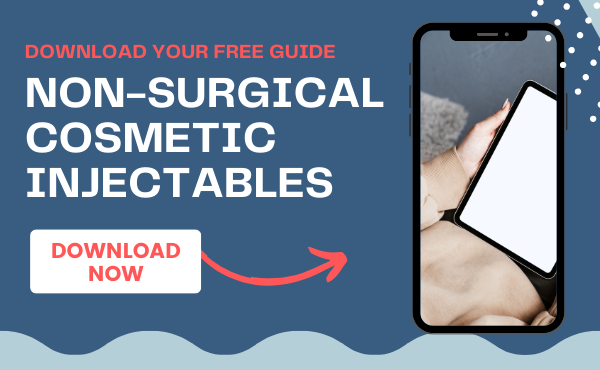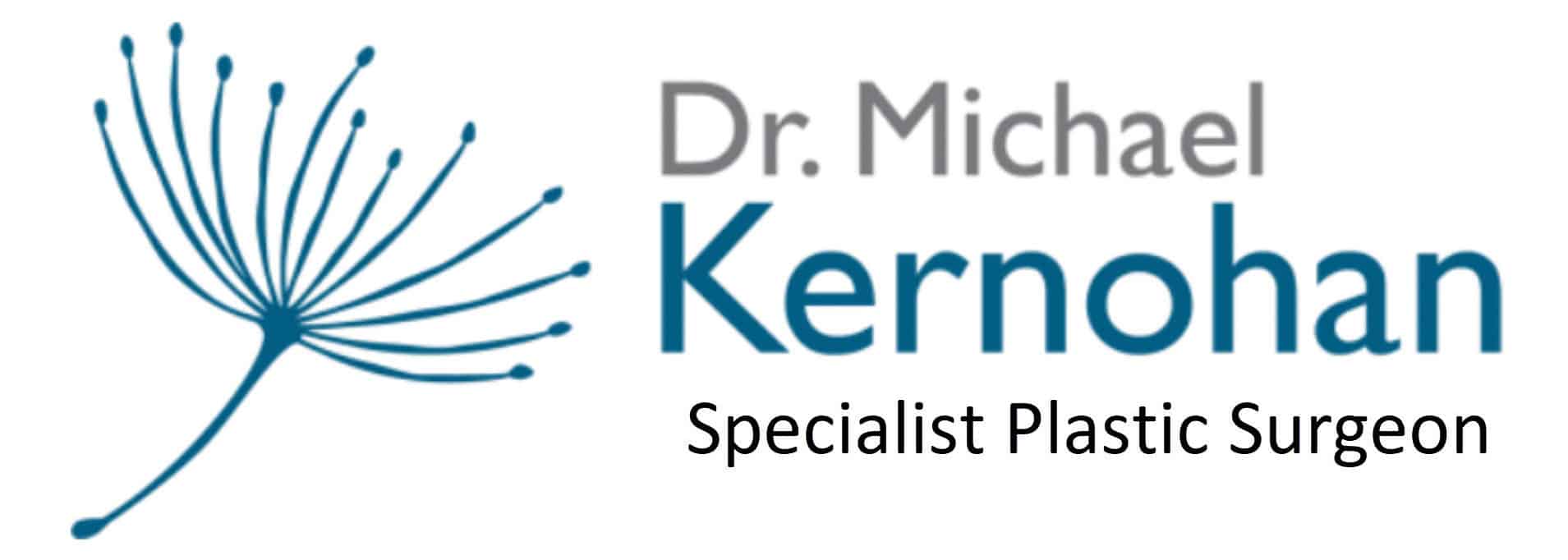Face Treatments with Facial Fillers
A variety of injectable volumising agents, known as facial fillers are available to address the face area.
These injectable fillers can offer non-surgical ways to flatten wrinkles, plump your cheeks and add volume to your lips..
However, keep in mind that permanent results can be achieved with a facelift surgery.
Sydney Facial Plastic Surgeon Dr Michael Kernohan has extensive knowledge in facial anatomy, an eye for aesthetics, and high surgical precision. He uses his expertise and skills to perform different facial treatments.
Download Dr Michael Kernohan Cosmetic Breast Surgery Guide

What are Facial Fillers?
Facial fillers, or dermal fillers are gel-like substances injected under the skin in different areas of the face. They are used to restore lost volume in areas of the face, smooth out wrinkles, and enhance facial contour.
Dermal fillers are also known as wrinkle fillers but they do much more than just that. These facial volumising materials can be used to:
- Smooth wrinkles and fine lines around the mouth and nose (marionette lines, smile lines, parenthesis)
- Restore lost volume in sunken cheeks and temples
- Give the lips more volume and reduce vertical lip lines
- Contour the face and jawline
- Smooth out a chin crease
- Improve facial symmetry
- Reduce a Nose Shape imperfection
Although facial filler injection is a non-surgical procedure, it requires specific training and thorough medical knowledge to ensure safe and natural-looking results. Dr Michael Kernohan provides the same level of skill and precision during facial injections as during surgical procedures.
What Are the Types of Facial Fillers?
There are several types of available injectable facial fillers – each type has a different purpose:
Hyaluronic acid (HA) Fillers
Hyaluronic acid (HA) is a natural substance found in the body that plumps up and hydrates the skin. It’s one of the most popular types of injectable fillers and is used to improve the contour of the face and rejuvenate the skin without surgery.
Most HA fillers are infused with lidocaine which helps minimise discomfort during and after facial filler treatment. HA facial fillers are used to achieve the following cosmetic results:
- Nonsurgical brow lift: Hyaluronic acid filler can flatten worry lines in the forehead and remove wrinkles at the corner of the eyes (crow’s feet)
- Temple augmentation: HA injections add volume to the temple area and plump up the skin in the forehead and around the eyes
- Nonsurgical alternative for jawline contouring: these fillers can give the jaw a stronger definition and the face a sharper angle
- Non-surgical lifting of the face: HA fillers can smooth deep smile lines and nasolabial folds
- Alternative for a cheek lift surgery: Hyaluronic acid injections add volume to the cheeks and give them a perkier appearance
- HA injected into the skin can also be used to fill out pitted scars caused by acne or injury to the face
Types of hyaluronic acid injections include:
- Juvederm products
- Restylane products
- Belotero Balance
These injections offer temporary results that last between 6-12 months because the body gradually and naturally absorbs hyaluronic acid particles. After the effect has worn out, you might need more injections.
Calcium hydroxylapatite (CaHA)
Calcium hydroxylapatite (CaHA) is also a naturally occurring substance in the body. The CaHA filler is a smooth gel containing microscopic calcium particles. CaHA is injected into the face to stimulate collagen production in the skin. CaHA filler is used to achieve:
- Facial rejuvenation without surgery: CaHA can fill out deep wrinkles in the face and improve volume in areas of the face with volume loss
- Cheek augmentation without surgery: CaHA injections can enhance the fullness of the cheeks without the need for cheek implants or a cheek lift
- Nonsurgical chin augmentation: CaHA fillers can flatten the jaw and chin creases and refine the outline of the face
CaHA facial fillers are biosynthetically produced which means no animal or animal product is used in their production. This helps lower the risk of allergic reactions and gives you natural-looking results.
CaHA injected into the face, such as Radiesse, is thicker than HA and its results can last longer – typically 12 months, but can last up to 3 years.
Poly-L-lactic acid
Poly-L-lactic acid is a synthetic substance that is not naturally found in the body. This type of filler is biocompatible (safe to use in the body) and biodegradable. It is used to restore facial volume lost due to ageing or illness.
Poly-L-lactic acid has been safely used in medical devices such as dissolvable stitches for many years.
When injected into the skin, this filler acts as a collagen stimulator; it smoothes fine lines by helping the skin rebuild collagen.
Dr Michael Kernohan meticulously injects poly-L-lactic acid into the appropriate areas of the face. He uses this type of injectable filler:
- As an alternative to lip lift surgery or lip flip procedure. Poly-L-lactic acid injections can plump thin lips and give them more volume
- To fill the lines caused by laughing and treats deep nasolabial folds without the need for a mid-facelift surgery
Poly-L-lactic acid fillers, such as Sculptra, don’t produce immediate results. Instead, results show over time as collagen production is stimulated. Two or three sessions are usually required to achieve the desired results which can last up to 2 years.
Although the results are considered semi-permanent, you may still require occasional touch-ups to maintain your improved cosmetic appearance.
Polymethylmethacrylate (PMMA)
Polymethylmethacrylate (PMMA) fillers are also synthetic biocompatible substances known as permanent soft tissue fillers.
PMMA comes in the shape of a microsphere or a tiny ball that remains beneath the skin to provide support. The body doesn’t absorb this type of filler so it doesn’t need reinjection.
Dr Kernohan strategically injects PMMA fillers to:
- Smooth medium to deep wrinkles around the mouth
- Augment thin lips without surgery
- Reduce facial acne scars
PMMA fillers, such as Bellafill, also contain collagen which is naturally occurring in the skin and provides firmness and support to the face.
A number of PMMA injections might be needed to create the desired volume and it can take up to 3 months to see the desired effect.
Autologous fat injections (facial fat grafting using your own fat)
This type of injectable filler treatment requires surgery.
During facial fat grafting, Dr Kernohan will use liposuction to collect fat from your own body– usually the lower abdomen or thighs. This autologous fat is then purified and injected through small incisions into different areas of the face.
Autologous facial fat injections:
- Are the most natural way to perk up the cheeks
- Can give more volume to the temples, forehead, or lips
- Produce results that could last for many years
Fat injected into the face can replace lost volume, plump up the cheeks, smooth wrinkles and give more volume to the lips.
The effects of facial fat grafting may be permanent but achieving the desired cosmetic effects usually requires more than one session, especially since the body absorbs some of the fat.
What are the Benefits of Facial Fillers?
Facial fillers have gained a lot of popularity because they offer the following benefits:
- They’re more cost-effective and a cheaper alternative to surgery
- They’re done in-office (no hospital stay is required)
- They’re short procedures that don’t take too much time
- They’re a safe way to change the appearance of your face without surgery
- They involve no downtime; you don’t need time to recover
- They give almost immediate results
- They are minimally invasive procedures
- They can be done using local anaesthesia
- The results can be revisited and retouched
- They have fewer complications than surgery
What to Expect During Facial Filler Procedure
Your facial treatment will begin with a consultation with Dr Michael Kernohan. He will discuss with you your medical history, cosmetic concerns, and desired aesthetic goals.
Usually, during a facial filler procedure, Dr Kernohan will:
- Start by cleaning the area of the face that needs the injections
- Then, he will apply a topical anaesthetic to numb the area. Many fillers contain lidocaine which helps reduce discomfort before and after the procedure
- After that, Dr Kernohan will inject precise amounts of filler in strategic locations beneath the skin
- You might experience mild bruising or swelling but these are usually temporary and subside over the days following the treatment
Depending on the type of injection and the treated area, you should be able to notice results immediately after receiving the injections.
You can usually return to normal activity right after receiving facial injections. However, Dr Kernohan might ask you to take the day off from strenuous activity.
Since facial fat grafting is a surgical procedure, it involves different steps. It’s usually done as an outpatient procedure and general or local anaesthesia may be used. Depending on the amount of liposuction, 1 or 2 weeks of downtime might be required for you to recover.
What are the Risks of a Facial Filler Procedure?
Severe complications from dermal fillers are extremely rare. Nevertheless, as with any procedure, injecting fillers in the face may have a few risks:
- Allergic reaction at the site of injection or throughout the body
- Swelling and inflammation around the injection location
- Itching
- Discomfort at the injection site
- Changes in skin colour (post-inflammatory hyperpigmentation – PIH) mostly on brown or black skin
- Mild pain
- Bleeding or bruising at the injection site
- Infection
- Scarring
- Blood vessel damage (very rare complication)
Dr Michael Kernohan will cover the risks of facial fillers in detail with you during your consultation and take necessary precautions to avoid any complications.
Facial filler injections are an excellent solution for people with minimal cosmetic problems who want to avoid cosmetic surgery.
FAQs about Facial Fillers:
How long do the results of facial fillers last?
- The results of dermal fillers can last from a few months to a year. The durability of injectable fillers depends on the type of filler used, the targeted facial area, and how extensive your cosmetic problems are. How long facial fillers last can also depend on how your skin reacts to or absorbs the injected substances. In addition, surgical filler treatments like facial fat grafts can have permanent results. It is best to avoid using ‘permanent fillers’.
Are facial fillers safe?
- Dermal fillers are regarded as safe when they’re administered by an accredited and trained professional. A qualified plastic surgeon, such as Dr Michael Kernohan, will be able to choose a suitable filler and use appropriate and sterilised techniques to ensure safe and optimal results without any complications. There are risks as stated above.
Are facial fillers painful?
- Dermal fillers have to be injected under your skin so you might feel a little discomfort once the needle is in. However, a topical anaesthetic is usually applied to your skin before the procedure to numb it and minimise your discomfort. Several injectables also contain lidocaine, an anaesthetic, which keeps the pain to a minimum during and after a facial filler procedure.
Further Reading about Face Surgery and Facial Fillers
- Read Dr Kernohan’s Facelift Surgery Page
- Read Dr Kernohan’s Blog about Recovery after Facelift
- Read Dr Kernohan’s Blog about Ageing Face
- Read Dr Kernohan’s Blog about Eight Features of a Beautiful Face
- Read Dr Kernohan’s Anti-Wrinkle Injections Procedure Page
Medical References about Dermal Facial Fillers
- Better Results in Facial Rejuvenation with Fillers – PMC
- Dermal fillers in aesthetics: an overview of adverse events and treatment approaches – PMC
- Whole-Face Approach with Hyaluronic Acid Fillers – PMC
- Dermal Fillers: Do’s and Dont’s – PMC
- Treatment of Soft Tissue Filler Complications: Expert Consensus Recommendations – PMC





